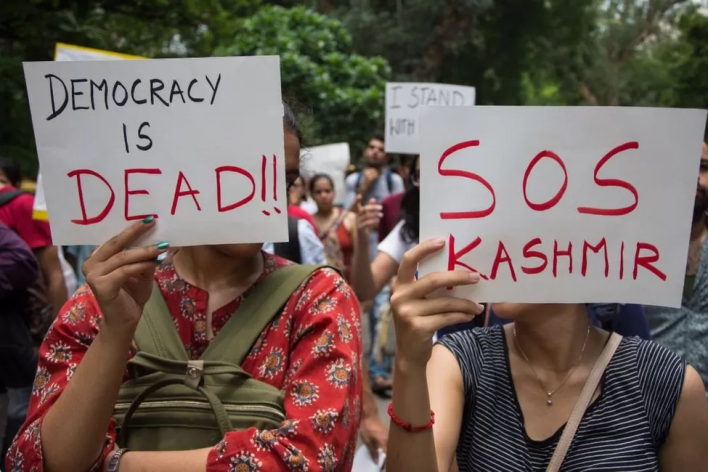Ahsan Fareed Shah Chishti
The Kashmir Valley’s breathtaking scenery, fre-quently referred to as “Paradise on Earth,” has been tarnished by a protracted struggle that has left a trail of misery, pain, and complicated geopolitical situations. The area has been the center of a contentious conflict that has grown over time and assumed new dimensions. The Kashmir dispute is no more a case of territorial dispute. The dimensions of the Kashmir conflict are transforming with the passing years. The Kashmir issue transformed from a territorial dispute to a case of human rights violation and international law. But, the revocation of Article 370 on 5th August 2019 by the Indian government has transformed the conflict into a new paradigm of “Settler Colonialism”.
The Kashmir conflict, a case of prolonged military occupation by India, is now under a transitional phase of settler colonialism. The Indian government is now enforcing settler colonial laws to change Kashmir’s demography and Muslim majority status. After the revocation of Article 370, there is an influx of non-permanent settlers in Indian Occupied Kashmir. Millions of Non-Kashmiris have been issued with the Kashmiri domicile. The Indian government is now fostering the settlement of Non-Kashmiris especially the Indian business community in IOK. The Indian government has started demographic engineering in IOK to demolish the cultural heritage of the Kashmiri Muslims.
Kashmir is still under the bestial situation of human rights. But, the BJP-led Indian government under Modi is trying to portray a different image of the Kashmir conflict. In the era of cyber warfare, the Indian government is depicting an image of peace in IIOJK through its media. By controlling communication and information in the occupied territory, the Indian government is trying to alter the international community’s viewpoints on Indian illegal occupation. Modi’s led Indian government is highlighting that the intensity of human rights violations in the IOK is reduced but the military landscape of Kashmir shows that the violation is not reduced rather it has only changed its forms. Before 2019, there were clear indications of organized violence by the Indian army. After 2019, the Indian army has changed the target selection and now their main target is Kashmiri youth. They are abducting and killing the young Kashmiris raising voices for their fundamental right of self-determination.
India has been trying to create a semblance of normalcy in Kashmir by promoting tourism. After 2019, India is utilizing the tourism potential of Jammu and Kashmir by attracting tourists. India is doing all this to weaken the freedom movement and to strengthen the occupation. The introduction of UAE’s Amman Group to IIOJK as a foreign investor is now changing the situation and dimensions of conflict. The ownership of agricultural lands is taken from the Kashmiri tribes and the military has started to expropriate the land. Amman Group is investing trillions of dollars in the establishment of a 500 shops-based shopping mall in Kashmir. This mall will not be appealing to the average Kashmiri rather it is for the extremely wealthy settlers and military officials. India is also in the process of setting up 42 industrial units in Kashmir. These industries, if established, will bring more militarisation to the region in the shape of security and more and more Kashmir land will be taken by settlers from the Kashmiri. This is to provide work to the unemployed youth of Kashmir and to make them slaves. All this will change the political, economic, and social character of Kashmir.
India is trying to engineer and merge Kashmir’s traditional industry into a large-scale industry. Dubai would try to produce cheap things by exploiting the labor of Kashmir to appeal to foreign markets. They are building industrial terminals in Srinagar. This kind of development in Kashmir is alarming because it is a threat to Kashmir’s self-determination. These policies are extremely threatening and it is adjunct to Indian colonialism in Kashmir.
There is a need to understand the Kashmir conflict in multitudinous ways. Pakistan should try to internationalize this conflict. Pakistan should engage international players to highlight the dispute and should work diplomatically to provide Kashmiris with their right to self-determination. Pakistan needs to develop strong economic and diplomatic ties with other states through which Pakistan can influence them to talk about the Kashmir issue and resolve it. The role of intellectuals would also be very important in portraying and highlighting the cause of Kashmir’s freedom at regional and international levels. The use of hard power and war would never result in the resolution of the Kashmir conflict, rather it would create problems for both countries and the people of Kashmir.
[The writer is a student of NDU and Intern at Kashmir Institute of International Relations, Is-lamabad.]










